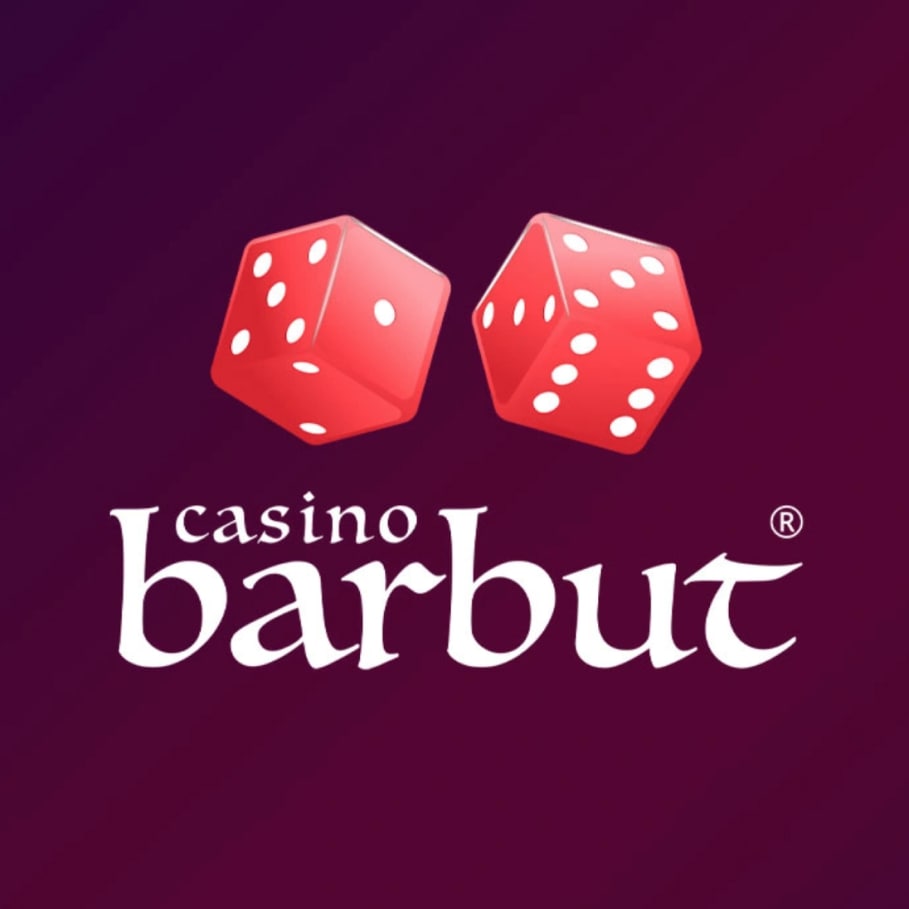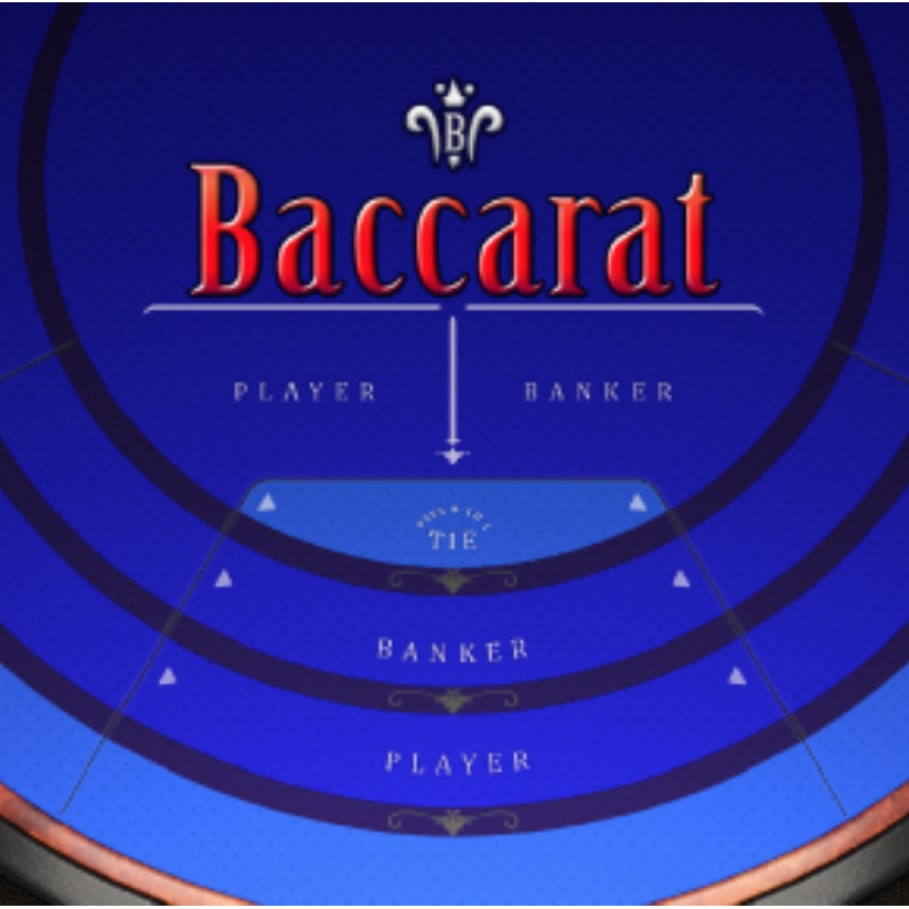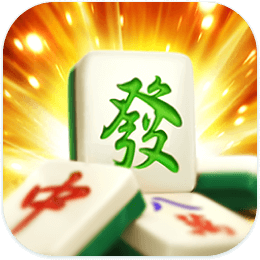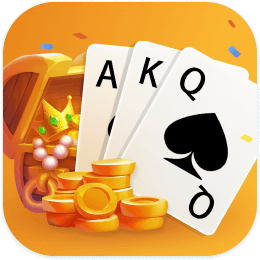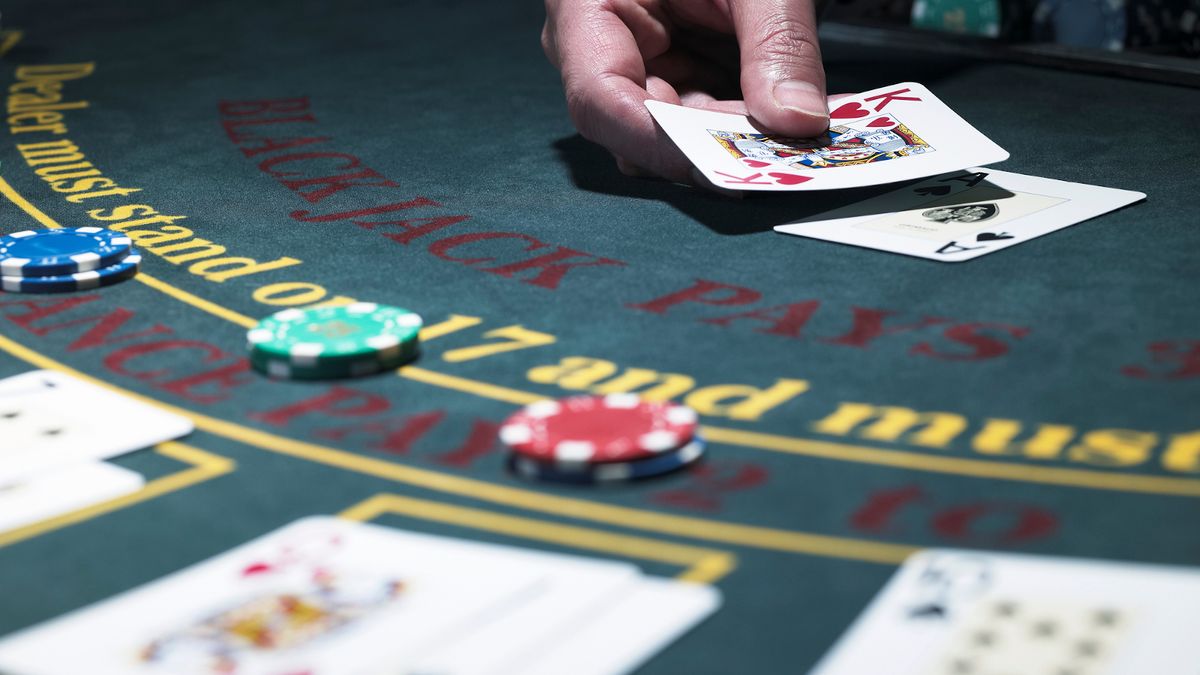The Easy OPP Count: A New Approach to Card Counting - Gambling With An Edge
September 11, 2022Leave a Comment Written by Arnold Snyder
The OPP Card Counting System: A New, Easier Approach to Counting Cards
By Carlos ZilzerFrom Blackjack Forum Vol. XXV #1, Winter 2005/06© 2005 Blackjack Forum
Introduction by Arnold SnyderMany blackjack players find even the simplest of the traditional card counting systems too cumbersome to use comfortably in casinos. I think the Red Seven Count is about as easy a counting system as has ever been developed up to now, but it’s not the answer for everyone. Many players simply don’t play in casinos often enough to maintain their counting skills, and do not have the time to practice sufficiently for their occasional casino trips.
Carlos Zilzer has developed a unique method of counting cards that is even simpler than the Red Seven Count. In fact, he tells me he has taught a few of his friends to use his “OPP Count” and they mastered it in a matter of hours. When I first read his method, I didn’t doubt that an amateur could learn it very quickly, but it wasn’t clear to me whether it would have much value in comparison with more traditional counting systems where we always weigh the high cards versus the low cards as cards are dealt.
Because there was no commercially available blackjack simulation software on the market that could handle the new method Carlos had devised for counting cards, he wrote his own program and begun testing his system on a simulator of his own device. But when he discovered ET Fan’s PowerSim software, he realized that it was much faster and more versatile than his own program, so he began running more extensive simulation tests with PowerSim. When he discovered that PowerSim was producing results comparable to his own software program, he submitted an article to Blackjack Forum describing his system and the simulation results.
The OPP Count is such a radical simplification of traditional card counting methods that I wanted to see more data before publishing the system. I asked Carlos to run more extensive tests not only of his system as described in the initial article that he submitted, but of numerous variations of the system, along with simulations of the Hi-Lo Count in the same games for comparison with his method. I also requested that he set counters on his simulations so that I could see that cards were being dealt accurately and randomly.
Carlos spent weeks running the simulation tests I requested and sending me spreadsheets with printouts of his results. He then compiled some of the most important data from these tests into a new Blackjack Forum article describing his system, its development, and the results of his simulations. I am proud to publish Carlos Zilzer’s OPP Count as one of the first truly new methods of counting cards to be developed in many years—a method that is surprisingly strong for its incredible simplicity of use, and the ease with which most players could learn it. — A. S.
The Easy OPP Count System
Part 1: The Basic Idea Behind Card CountingThe whole idea behind card counting is to determine how rich or poor the shoe is at any time with cards favorable to the player or the dealer. A shoe rich in high cards (tens and aces) is favorable to the player, while a shoe rich in low cards (2s through 6s) is favorable to the house.
All modern card counting systems that I am aware of assign a negative value to the high cards and a positive value to low cards. The main difference between the systems is the value assigned to the different cards.
As an example, the popular Hi-Lo system assigns the value -1 to the tens and aces and the value +1 to the low cards, 2s through 6s. As the cards come out of the shoe, players add the values of those cards to obtain what is called a running count, which can be a positive or negative number depending on the proportion of low to high cards dealt from the shoe. With balanced counts, before making a betting or playing decision, the player divides the running count by the number of decks that have not yet been dealt to obtain what is called the true count.
Counting this way is not easy, as the player needs to pay attention to the cards while they are being dealt and then must make mental calculations. There are easier counting systems that eliminate the calculation of the true count by assigning positive values to more cards than those with negative values. For example, the Red Seven Count developed by Arnold Snyder has the same card values as the balanced Hi-Lo Count, but assigns a value of +1 to the red sevens, creating an imbalance of +2 per deck.
The goal of a good card-counting system is to be as simple to use as possible without losing the power to accurately determine when the player has the advantage. The OPP count does exactly that: It is a very simple method to learn and use that will give you results comparable to the Hi Lo Count. It is a running count system requiring no math at the tables, and it’s even easier to use than the Red Seven.
The main difference between this new counting system and all of the traditional ones is that it uses new factors to determine the composition of the remaining decks. It is the easiest way to count cards with a high degree of betting accuracy.
Part 2: The Mathematical Coincidence
In a deck of 52 cards there are 20 high cards (tens, faces and aces). There are also 20 low cards (2s through 6s). Since 52 / 20 = 2.6, if you shuffle a deck and start dealing cards you will see one high card every two or three cards–or every 2.6 cards on average–and you will also see one low card with the same frequency.
It has also been determined with computer simulations that each player or dealer hand will receive an average number of cards very close to 2.6 cards in blackjack games with the European no-hole-card rule. (The actual number determined after the simulation of billions of hands using different simulators is 2.63.) With standard US rules, in which the dealer hand receives a hole card, the average number of cards per hand, including the dealer’s hand, is closer to 2.7.
Now we have something very interesting: Since the average blackjack hand contains 2.6 to 2.7 cards, and the proportion of low cards in a deck (and high cards in a deck) is exactly 1 out of every 2.6 cards, then it follows that the average player or dealer hand can be expected to receive one high card and one low card.
With the help of computer simulation (see my results below), it has been shown that any player or dealer hand will actually receive an average of about 1.02 low cards and 1.02 high cards per hand (with US rules where the dealer takes a hole card). In the table below, you will find the results of a 100 million hand simulation using PowerSim for a 6-deck game.
| Results of the simulations counting high cards per hand |
|---|
| Total dealt cards: |
| Total dealt hands: |
| Total high cards: |
| Average total cards/hand: |
| Average high cards/hand: |
| Results of the simulations counting low cards per hand |
|---|
| Total dealt cards: |
| Total dealt hands: |
| Total low cards: |
| Average total: cards/hand: |
| Average low cards/hand: |
This data is the basis of the OPP counting system. OPP stands for One Per Person. As I will explain, the number of low or high cards per hand will give a very good indication of the composition of the remaining decks.
Part 3: Developing and Testing the Easy OPP Card Counting System
I first tested counting the number of high cards that were dealt per round and comparing this number with the total number of hands dealt per round.
Imagine a blackjack table with three players and the dealer dealing the first round of the shoe. These are the first round hands:
| Player 1 | Ace, 10 — Blackjack |
|---|---|
| Player 2 | 10, 2, 7 — 19 |
| Player 3 | 8, 6, 10 — (bust) |
| Dealer | 10, 3, 6 — 19 |
As you can see there were 4 hands played and 5 high cards were dealt (an ace and 10 to Player 1, a ten to Player 2, a ten to Player 3, and a ten to the Dealer).
The OPP count was obtained by subtracting the total number of high cards dealt from number of hands played, in this case, 4 – 5 = -1, for an OPP running count of -1.
The next round the hands dealt were:
| Player 1 | 10, 5, 5 — 20 |
|---|---|
| Player 2 | Ace, 2, 5 — 18 |
| Player 3 | 8, 6, 7— 21 |
| Dealer | 9, 5, 3 — 17 |
At this time there were again 4 hands played, but only 2 high cards were dealt. Thus, the count for this round will be 4 – 2 = 2. The new running count is now -1 + 2 = +1 (The -1 is the running count from the previous round.)
This process continues until the end of the shoe, adding the running count of each round to the cumulative running count of the prior rounds.
None of the commercially available blackjack simulation programs could be adapted to test this new counting system, so it was necessary to develop a simulator for this job specifically. The first simulations I ran, using my own simulation program, were performed in the beginning of 2005 using a program specially written for the tests. It was slow but returned the data I was looking for. With the new powerful and fast open source PowerSim simulator, available on this Web site, simulations that used to take me about two hours are now performed in eight minutes.
The first step was to verify that the count was producing logical results. We would expect the count to present a normal distribution of positive and negative counts with the majority of counts around zero, and a reasonable spread of counts on both the positive and negative side.
The chart showed the PowerSim results for 100 million rounds of a player using basic strategy in a six-deck game. About 80% of the hands were played with running counts between -6 and +6 and approximately 14% of the hands were played at a zero running count. But the graph showed that the count was negative more times than positive. This is not what we would expect for a traditional balanced counting system, which would tend to produce a more symmetrical pattern of counts on either side of zero.
The next step, however, was to see how well the player’s advantage correlated to the count. In order to have an accurate counting system there must be a strong relation between the count and the player’s advantage. This was the case in all negative counts, but the results at high positive counts were not well-correlated to the player’s expectation.
The chart showed that the relation between the running count and the advantage was almost linear up to counts of +12, but that the relation became erratic at counts higher than +12. I tried several simulations with PowerSim and always got inconsistent results starting at counts of +12 and above.
I next wanted to see what the overall player advantage would be using this counting system with a bet spread. I ran a 100 million-hand simulation using the following bet ramp: 1 unit up to count +1 and ramping up 2, 4, and 16 units respectively at counts +2, +3 and +4. The following results were obtained using the PowerSim simulator:
| Advantage with 1-16 spread | 0.3271% |
|---|---|
| Average bet (units) | 2.683 |
Although it was possible to get an edge using this method, these results were very disappointing and were not comparable to the results obtainable with a traditional card counting system. The system’s power represented less than 40% of the betting gain that could be obtained with the standard Hi Lo Count in the same game.
Before dropping the idea I decided to reverse the OPP counting method. Instead of subtracting the number of high cards dealt per round from the number of hands in play, I decided to test the system subtracting the number of hands in play from the number of low cards dealt per round.
Here’s how it modified the counting method:
Imagine a blackjack table with three players and the dealer dealing the first round of the shoe. These are the first round hands:
| Player 1 | Ace, 10 — Blackjack |
|---|---|
| Player 2 | 10, 2, 7 — 19 |
| Player 3 | 8, 6, 10 — (bust) |
| Dealer | 7, 7, 5 — 19 |
As you can see there were 4 hands played and only 3 low cards were dealt (a 2 to Player 2, a 6 to Player 3, and a 5 to the Dealer).
The OPP count is obtained by subtracting the total number of hands played from the number of low cards dealt, in this case, 3 – 4 = -1, and that is the OPP running count.
The next round the hands dealt were:
| Player 1 | 10, 5, 5 — 20 |
|---|---|
| Player 2 | Ace, 2, 4, 10 — 17 |
| Player 3 | 8, 6, 7 — 21 |
| Dealer | 10, 4, 3 — 17 |
At this time there were also 4 hands played but 7 low cards were dealt. The count for this round will be 7 – 4 = +3. The new running count is now -1 + 3 = +2 (The -1 is the running count from the previous round.)
This process continues until the end of the shoe, adding the running count of each round to the cumulative running count of the prior rounds.
So I reversed the OPP counting method in this way, comparing the number of low cards dealt to the number of hands in play. We again have a normal distribution of the counts with more than 80% of the counts occurring in the range from -6 to +6. But this time the count distribution is more positive than negative.
This graph showed that there was a much more linear relation between the running count and the player expectation. The unpredictable results obtained at high counts when using the OPP method to compare high cards to hands dealt do not occur when we compare low cards to hands dealt. With this OPP counting method, the player starts to have an edge over the house when the running count reaches +5.
I then ran a simulation applying a bet ramp of 1 unit up to a count of +5, and ramping up to 2, 4, and 16 units at counts of +6, +7, and +8 respectively. The following results compare the OPP with the Hi Lo Count with a similar 1-to-16 bet ramp. (Both systems were tested using basic strategy only.)
| OPP | Hi Lo | |
|---|---|---|
| Player edge with bet ramp | 0.6359% | 0.7723% |
| Average bet (in units) | 2.907 | 2.547 |
As shown in the table above, the new system has a betting power equivalent to 82+% of the standard Hi Lo system, but with far greater ease of use.
A new and very simple count system has been born: the OPP Count system. The player counts only the number of low cards dealt per round and compares this with the number of hands played in the round.
Mathematical Considerations
Many players may wonder why counting the high cards versus hands dealt was less efficient than counting the low cards versus hands dealt. That is because the OPP method does not really have us comparing low cards with high cards as with a traditional card counting system.
Instead, we are comparing low cards or high cards with something that has a frequency distribution of its own—that is, the number of cards per hand. We know that the overall average number of cards per hand is 2.7, but that the number of cards per hand will also vary with the count. It is logical that the number of cards per hand will be higher when the count is rising because more cards will be required to complete the hands when extra low cards are being dealt.
Consider what happens when counting high cards per hand if we have a hand with 3 or 4 low cards, then hit with a high card and bust. Because this hand contains only one high card, it is counted as “zero,” since there is no discrepancy from the normal number of high cards (one) that should occur per hand.
If we were counting the low cards, this hand will accurately reflect the fact that the count has gone up in the player’s favor, since more than one low card has been dealt to it. It is less probable to have a hand with 3 or 4 high cards in it, because such a hand would require either a soft or stiff hand to start with that we hit with multiple aces. Multiple-high-card hands would be rare, while multiple-low-card hands would occur more frequently, and produce a more accurate measure of advantage.
Analyses of Two-deck and Eight-deck Blackjack Games
In order to configure a system usable in most situations, I performed simulations with PowerSim to determine the effectiveness of the OPP count in games with two decks and eight decks, again comparing the betting gain with the gain from Hi-Lo.
Two DecksApplying a bet ramp with a spread of 1 unit up to a count of +1 and ramping up 2, 4, 6, 8 and 10 units respectively at counts of +2, +3, +4, +5 and +6, the following results were obtained using the PowerSim simulator (again, with both systems playing basic strategy only):
| Two deck performance | OPP | Hi Lo |
|---|---|---|
| Player edge with bet ramp | 0.8218% | 1.0073% |
| Average bet (in units) | 2.097 | 1.875 |
The power of the OPP count is again about 82% of the standard Hi Lo with no index play.
Eight DecksApplying a bet ramp with a spread of 1 unit up to count +7 and ramping up 2, 4 and 16 units respectively at counts +8, +9 and +10, the following results were obtained using the PowerSim simulator (again with both the OPP and Hi-Lo playing basic strategy only):
| Eight deck performance | OPP | Hi Lo |
|---|---|---|
| Player edge with bet ramp | 0.4416% | 0.5772% |
| Average bet | 2.691 | 2.249 |
The betting power of the OPP count is shown to be about 77% of the standard Hi Lo in the eight-deck game.
Testing Alternative Counting StrategiesI also tested alternatives for the OPP system, including:
- Count only tens
- Count nine and tens
- Consider 3 to 7 as low cards
- Consider 3, 4, 5 and 6 as low cards
- Consider 2, 3, 4, 5, 6 and 7 as low cards
Playing Indexes for the Easy OPP Card Counting SystemThe only playing index tested so far for the OPP count is the insurance index, which adds an additional 0.009% edge to all games tested (2, 6 and 8 decks)
The running count insurance index for a 6-deck game is +12. For a 2-deck game the index is +5, and for an 8-deck game the index is +14.
Snyder comments: It is not intuitive that the insurance gain from a 2-deck game with 75% penetration would be the same as the insurance gain from an 8-deck game with 75% penetration, as this would not be the case with a traditional card counting system.
The OPP Count, however, does not correlate well with the insurance effects of removal since ten-valued cards are not actually counted. I suspect that OPP running count indices for some of the more important strategy decisions, however, especially standing on 15 or 16 v. Ten, will be found by Carlos and others through continued simulation tests, as the counting method will probably correlate very well with these decisions.
THE OPP COUNT
Basic StrategyBefore learning any count system it is a must to master basic strategy . The use of basic strategy will provide the player with the minimum advantage for the house. The counting system will turn that small house advantage into a small advantage for the player. Not using basic strategy may give the house such a large edge that no counting system will be able to turn the advantage to the player’s side.
OPP RulesValue of the Hands:
- A hand with no low cards (2 – 6) has a value of -1
- A hand with one low card has a value of 0
- A hand with 2 low cards has a value of +1
- A hand with 3 low cards has a value of +2 and so on
- Split hands are considered new hands
This value is independent of the total number of cards in the hand. For example:
Ace, Ace, 2, 2, 10, 3 has an OPP value of +2
2, 3, 5, 3, 6 has an OPP value of + 4
7, 7, 7 has an OPP value of -1
Ace, 10 has an OPP value of -1
6, 7, 8 has an OPP value of 0
9, 8 has an OPP value of -1
10, 6, Ace has an OPP value of 0
Counting the Cards
It is very easy to mentally count up or down in positive numbers. Considering that 80% of the hands will be in the range of -6 to +6, I recommend starting the running count for the OPP system at +6 at the beginning of a shoe. In this way, the count will very seldom reach negative numbers.
Wait for the dealer to deal the first two cards to each player, as well as the two dealer cards (upcard and hole card, if dealt). You can speak, make jokes, and drink your soft drink. You don’t have to count anything while the cards are being dealt. If someone gets a blackjack and the dealer pays him and places his cards in the discard try, subtract one from your running count. Then check the hand of each player as they are making their playing decisions.
| Beginning of the shoe: | Running count +6 | |
|---|---|---|
| Player 4 | Ace, 10 (blackjack) | Running count +5 dealer took the cards to the discard try |
| Player 1 | Ace, Ace, 2, 2, 10, 3 | Running count +7 |
| Player 2 | 2, 3, 5, 3, 6 | Running count +11 |
| Player 3 | 7, 7, 7 | Running count +10 |
| Player 5 | 6, 7, 8 | Running count +10 |
| Player 6 | 9, 8 | Running count +9 |
| Dealer | 10, 6, Ace | Running count +9 |
If any player happens to split hands, they should be considered new hands and the value of the original hand should be ignored.
The best way to practice the system is to play blackjack at home. Use a deck and start dealing cards to three imaginary players and to yourself as the dealer. Practice the count as indicated above while you play each hand. In this way you will see and practice counting all possible hands that can appear in real life games. You will learn to count spilt hands and to count very fast while the dealer is collecting the cards after a dealer blackjack.
Snyder comments: My method of counting with the OPP system is a bit different. Before the hands are dealt, I immediately subtract the number of hands in play. So, if I use Carlos’s suggestion to start counting at +6, with three players at the table each playing one hand, I make my count +2 before any cards are dealt (subtracting one for each player hand and the dealer’s hand).
Then, as each player plays his hand, I simply add the total number of low cards in it. When the next round starts, again assuming three player hands are being dealt, I’ll immediately deduct 4 from the current running count, and repeat as above. One of the best features of the OPP Count is that it makes back-counting and table-hopping a breeze. You can approach a table and quickly scan for the total number of low cards on the layout, then subtract the number of hands that were in play after you get your low-card count.
You will see that the OPP is very easy to learn and to master. When you feel proficient counting the cards at home, you can practice in an Internet casino playing for fun money at a table with multiple players. Be aware that the count won’t mean anything in an Internet casino where the online software shuffles after every round. You will only use these games as a practice method.
After you have practiced enough at home, go to a casino and start counting while other people play. When you feel comfortable sit at a table and start playing using the OPP count.
You will see that you will get used to the system very fast, and that it really does not require 100% concentration except when each player is making his playing decisions. The only moment you will need to count quickly is when the dealer has a blackjack, as he will collect the cards of all the players’ hands very quickly.
Betting to WinOnce you have learned this very simple counting method the only thing you need to do is wait for the right moment to increase your bet.
If you have started at a running count of +6, wait until the count reaches +12 for a six-deck game, +14 for an eight-deck game, or +8 for a two-deck game. At these counts the advantage has shifted to the players. The higher the count value, the higher the player edge, and the bigger your bet should be. We call this point where the advantage turns to the player’s side the “pivot.”
Be very patient. Only about 18% of your hands will be played at counts over the pivot in shoe games, and the player advantage will not occur in all shoes. It is possible that you won’t have an advantage for several shoes, or even all night. Also remember that there is no warranty that you will win most of your hands when the count reaches the pivot. There is always “variance” in gambling results (you may call it luck). Remember that there will be many times when you will lose high bet hands.
The following table shows the recommended bet ramps for games with two, six, and eight decks, to get the best advantage for the player at the minimum risk. The first three columns are the running counts where you raise your bet, according to the number of decks in the game. The fourth column is the recommended bet in “betting units.” And the fifth and sixth columns show the bet in dollars for $5 or $10 units.
For example, if you are sitting at a $5 minimum six-deck table, you may set your bet unit to $5, and if the count reaches +12 you bet 2 times your betting unit, or $10. If the count reaches +14, you will bet 16 times your betting unit, or $80.
| Running count8 deck | Running count 6 deck | Running count 2 deck | Unitsto bet | $5 table | $10 table |
|---|---|---|---|---|---|
| Less than +14 | Less than +12 | Less than +8 | 1 | $5 | $10 |
| +14 | +12 | +8 | 2 | $10 | $20 |
| +15 | +13 | +9 | 4 | $20 | $40 |
| +16 | +14 | +10 | 16 | $80 | $160 |
| +17 or more | +15 or more | +11 or more | 16 | $80 | $160 |
If the count reaches values of zero or less during two consecutive rounds in the shoe it is recommended to stop playing until the beginning of the next shoe. This will save you a lot of money.
Snyder comments: I will point out here that Carlos is playing primarily in South American casinos where card counters are uncommon and camouflage is not a big necessity. Players in the US or elsewhere must always bear in mind the heat factor. His two-deck betting strategy would likely get you booted out fairly quickly in many US casinos.
For playing shoe games in the US, a back-counting strategy would likely be more advisable (and more profitable) than a 1-16 spread. To back-count is to watch the cards being dealt on a table without playing, ready to jump in and play when the count goes up and you will be starting play with an advantage.
Table-hopping is an extension of back-counting that pros use in big casinos, which tend to have multiple pits with many blackjack tables. Table-hoppers leave the game when the count goes negative and start play at another table. They refuse to play when the casino has a big edge.
The Insurance BetBasic strategy recommends not taking insurance, but card counting sometimes indicates an insurance advantage for the card counter.
With the OPP Count, if we start our count at +6 at the beginning of the shoe, the insurance index is +18 for the six-deck game, +20 for the eight-deck game, and +11 for the two-deck game. This means that if you are playing in a six-deck game and the running count reaches +18 or more, and the dealer has an Ace up, you should place the insurance bet, because you will win the bet more than 35 % of the time. Simulations with PowerSim have confirmed these index numbers.
Final Thoughts on the Easy OPP Card Counting System
OPP is a very simple system to learn and to use. Practice at home, go to a casino and stand near a table and practice the count while others play. I know people who have mastered the system in less than a weekend and now they are part of the select group of players who are making money playing blackjack. ♠
Note: Although hundreds of independent researchers and mathematicians have proven that card counting is a winning strategy over the long run, gambling is always risky. Anything can happen in the short run. No one can ever guarantee that you will win even when you are playing with an advantage. Never gamble with money you can’t afford to lose.
By Carlos ZilzerFrom Blackjack Forum Vol. XXV #1, Winter 2005/06© 2005 Blackjack Forum
Introduction by Arnold Snyder Many blackjack players find even the simplest of the traditional card counting systems too cumbersome to use comfortably in casinos. I think the Red Seven Count is about as easy a counting system as has ever been developed up to now, but it’s not the answer for everyone. Many players simply don’t play in casinos often enough to maintain their counting skills, and do not have the time to practice sufficiently for their occasional casino trips.
Carlos Zilzer has developed a unique method of counting cards that is even simpler than the Red Seven Count. In fact, he tells me he has taught a few of his friends to use his “OPP Count” and they mastered it in a matter of hours. When I first read his method, I didn’t doubt that an amateur could learn it very quickly, but it wasn’t clear to me whether it would have much value in comparison with more traditional counting systems where we always weigh the high cards versus the low cards as cards are dealt.
Because there was no commercially available blackjack simulation software on the market that could handle the new method Carlos had devised for counting cards, he wrote his own program and begun testing his system on a simulator of his own device. But when he discovered ET Fan’s PowerSim software, he realized that it was much faster and more versatile than his own program, so he began running more extensive simulation tests with PowerSim. When he discovered that PowerSim was producing results comparable to his own software program, he submitted an article to Blackjack Forum describing his system and the simulation results.
The OPP Count is such a radical simplification of traditional card counting methods that I wanted to see more data before publishing the system. I asked Carlos to run more extensive tests not only of his system as described in the initial article that he submitted, but of numerous variations of the system, along with simulations of the Hi-Lo Count in the same games for comparison with his method. I also requested that he set counters on his simulations so that I could see that cards were being dealt accurately and randomly.
Carlos spent weeks running the simulation tests I requested and sending me spreadsheets with printouts of his results. He then compiled some of the most important data from these tests into a new Blackjack Forum article describing his system, its development, and the results of his simulations. I am proud to publish Carlos Zilzer’s OPP Count as one of the first truly new methods of counting cards to be developed in many years—a method that is surprisingly strong for its incredible simplicity of use, and the ease with which most players could learn it. — A. S.
The Easy OPP Count System
Part 1: The Basic Idea Behind Card Counting The whole idea behind card counting is to determine how rich or poor the shoe is at any time with cards favorable to the player or the dealer. A shoe rich in high cards (tens and aces) is favorable to the player, while a shoe rich in low cards (2s through 6s) is favorable to the house.
All modern card counting systems that I am aware of assign a negative value to the high cards and a positive value to low cards. The main difference between the systems is the value assigned to the different cards.
As an example, the popular Hi-Lo system assigns the value -1 to the tens and aces and the value +1 to the low cards, 2s through 6s. As the cards come out of the shoe, players add the values of those cards to obtain what is called a running count, which can be a positive or negative number depending on the proportion of low to high cards dealt from the shoe. With balanced counts, before making a betting or playing decision, the player divides the running count by the number of decks that have not yet been dealt to obtain what is called the true count.
Counting this way is not easy, as the player needs to pay attention to the cards while they are being dealt and then must make mental calculations. There are easier counting systems that eliminate the calculation of the true count by assigning positive values to more cards than those with negative values. For example, the Red Seven Count developed by Arnold Snyder has the same card values as the balanced Hi-Lo Count, but assigns a value of +1 to the red sevens, creating an imbalance of +2 per deck.
The goal of a good card-counting system is to be as simple to use as possible without losing the power to accurately determine when the player has the advantage. The OPP count does exactly that: It is a very simple method to learn and use that will give you results comparable to the Hi Lo Count. It is a running count system requiring no math at the tables, and it’s even easier to use than the Red Seven.
The main difference between this new counting system and all of the traditional ones is that it uses new factors to determine the composition of the remaining decks. It is the easiest way to count cards with a high degree of betting accuracy.
Part 2: The Mathematical Coincidence
In a deck of 52 cards there are 20 high cards (tens, faces and aces). There are also 20 low cards (2s through 6s). Since 52 / 20 = 2.6, if you shuffle a deck and start dealing cards you will see one high card every two or three cards–or every 2.6 cards on average–and you will also see one low card with the same frequency.
It has also been determined with computer simulations that each player or dealer hand will receive an average number of cards very close to 2.6 cards in blackjack games with the European no-hole-card rule. (The actual number determined after the simulation of billions of hands using different simulators is 2.63.) With standard US rules, in which the dealer hand receives a hole card, the average number of cards per hand, including the dealer’s hand, is closer to 2.7.
Now we have something very interesting: Since the average blackjack hand contains 2.6 to 2.7 cards, and the proportion of low cards in a deck (and high cards in a deck) is exactly 1 out of every 2.6 cards, then it follows that the average player or dealer hand can be expected to receive one high card and one low card.
With the help of computer simulation (see my results below), it has been shown that any player or dealer hand will actually receive an average of about 1.02 low cards and 1.02 high cards per hand (with US rules where the dealer takes a hole card). In the table below, you will find the results of a 100 million hand simulation using PowerSim for a 6-deck game.
| Results of the simulations counting high cards per hand |
|---|
| Total dealt cards: |
| Total dealt hands: |
| Total high cards: |
| Average total cards/hand: |
| Average high cards/hand: |
| Results of the simulations counting low cards per hand |
|---|
| Total dealt cards: |
| Total dealt hands: |
| Total low cards: |
| Average total: cards/hand: |
| Average low cards/hand: |
This data is the basis of the OPP counting system. OPP stands for One Per Person. As I will explain, the number of low or high cards per hand will give a very good indication of the composition of the remaining decks.
Part 3: Developing and Testing the Easy OPP Card Counting System
I first tested counting the number of high cards that were dealt per round and comparing this number with the total number of hands dealt per round.
Imagine a blackjack table with three players and the dealer dealing the first round of the shoe. These are the first round hands:
| Player 1 | Ace, 10 — Blackjack |
|---|---|
| Player 2 | 10, 2, 7 — 19 |
| Player 3 | 8, 6, 10 — (bust) |
| Dealer | 10, 3, 6 — 19 |
As you can see there were 4 hands played and 5 high cards were dealt (an ace and 10 to Player 1, a ten to Player 2, a ten to Player 3, and a ten to the Dealer).
The OPP count was obtained by subtracting the total number of high cards dealt from number of hands played, in this case, 4 – 5 = -1, for an OPP running count of -1.
The next round the hands dealt were:
| Player 1 | 10, 5, 5 — 20 |
|---|---|
| Player 2 | Ace, 2, 5 — 18 |
| Player 3 | 8, 6, 7— 21 |
| Dealer | 9, 5, 3 — 17 |
At this time there were again 4 hands played, but only 2 high cards were dealt. Thus, the count for this round will be 4 – 2 = 2. The new running count is now -1 + 2 = +1 (The -1 is the running count from the previous round.)
This process continues until the end of the shoe, adding the running count of each round to the cumulative running count of the prior rounds.
None of the commercially available blackjack simulation programs could be adapted to test this new counting system, so it was necessary to develop a simulator for this job specifically. The first simulations I ran, using my own simulation program, were performed in the beginning of 2005 using a program specially written for the tests. It was slow but returned the data I was looking for. With the new powerful and fast open source PowerSim simulator, available on this Web site, simulations that used to take me about two hours are now performed in eight minutes.
The first step was to verify that the count was producing logical results. We would expect the count to present a normal distribution of positive and negative counts with the majority of counts around zero, and a reasonable spread of counts on both the positive and negative side.
The chart showed the PowerSim results for 100 million rounds of a player using basic strategy in a six-deck game. About 80% of the hands were played with running counts between -6 and +6 and approximately 14% of the hands were played at a zero running count. But the graph showed that the count was negative more times than positive. This is not what we would expect for a traditional balanced counting system, which would tend to produce a more symmetrical pattern of counts on either side of zero.
The next step, however, was to see how well the player’s advantage correlated to the count. In order to have an accurate counting system there must be a strong relation between the count and the player’s advantage. This was the case in all negative counts, but the results at high positive counts were not well-correlated to the player’s expectation.
The chart showed that the relation between the running count and the advantage was almost linear up to counts of +12, but that the relation became erratic at counts higher than +12. I tried several simulations with PowerSim and always got inconsistent results starting at counts of +12 and above.
I next wanted to see what the overall player advantage would be using this counting system with a bet spread. I ran a 100 million-hand simulation using the following bet ramp: 1 unit up to count +1 and ramping up 2, 4, and 16 units respectively at counts +2, +3 and +4. The following results were obtained using the PowerSim simulator:
| Advantage with 1-16 spread | 0.3271% |
|---|---|
| Average bet (units) | 2.683 |
Although it was possible to get an edge using this method, these results were very disappointing and were not comparable to the results obtainable with a traditional card counting system. The system’s power represented less than 40% of the betting gain that could be obtained with the standard Hi Lo Count in the same game.
Before dropping the idea I decided to reverse the OPP counting method. Instead of subtracting the number of high cards dealt per round from the number of hands in play, I decided to test the system subtracting the number of hands in play from the number of low cards dealt per round.
Here’s how it modified the counting method:
Imagine a blackjack table with three players and the dealer dealing the first round of the shoe. These are the first round hands:
| Player 1 | Ace, 10 — Blackjack |
|---|---|
| Player 2 | 10, 2, 7 — 19 |
| Player 3 | 8, 6, 10 — (bust) |
| Dealer | 7, 7, 5 — 19 |
As you can see there were 4 hands played and only 3 low cards were dealt (a 2 to Player 2, a 6 to Player 3, and a 5 to the Dealer).
The OPP count is obtained by subtracting the total number of hands played from the number of low cards dealt, in this case, 3 – 4 = -1, and that is the OPP running count.
The next round the hands dealt were:
| Player 1 | 10, 5, 5 — 20 |
|---|---|
| Player 2 | Ace, 2, 4, 10 — 17 |
| Player 3 | 8, 6, 7 — 21 |
| Dealer | 10, 4, 3 — 17 |
At this time there were also 4 hands played but 7 low cards were dealt. The count for this round will be 7 – 4 = +3. The new running count is now -1 + 3 = +2 (The -1 is the running count from the previous round.)
This process continues until the end of the shoe, adding the running count of each round to the cumulative running count of the prior rounds.
So I reversed the OPP counting method in this way, comparing the number of low cards dealt to the number of hands in play. We again have a normal distribution of the counts with more than 80% of the counts occurring in the range from -6 to +6. But this time the count distribution is more positive than negative.
This graph showed that there was a much more linear relation between the running count and the player expectation. The unpredictable results obtained at high counts when using the OPP method to compare high cards to hands dealt do not occur when we compare low cards to hands dealt. With this OPP counting method, the player starts to have an edge over the house when the running count reaches +5.
I then ran a simulation applying a bet ramp of 1 unit up to a count of +5, and ramping up to 2, 4, and 16 units at counts of +6, +7, and +8 respectively. The following results compare the OPP with the Hi Lo Count with a similar 1-to-16 bet ramp. (Both systems were tested using basic strategy only.)
| OPP | Hi Lo | |
|---|---|---|
| Player edge with bet ramp | 0.6359% | 0.7723% |
| Average bet (in units) | 2.907 | 2.547 |
As shown in the table above, the new system has a betting power equivalent to 82+% of the standard Hi Lo system, but with far greater ease of use.
A new and very simple count system has been born: the OPP Count system. The player counts only the number of low cards dealt per round and compares this with the number of hands played in the round.
Mathematical Considerations
Many players may wonder why counting the high cards versus hands dealt was less efficient than counting the low cards versus hands dealt. That is because the OPP method does not really have us comparing low cards with high cards as with a traditional card counting system.
Instead, we are comparing low cards or high cards with something that has a frequency distribution of its own—that is, the number of cards per hand. We know that the overall average number of cards per hand is 2.7, but that the number of cards per hand will also vary with the count. It is logical that the number of cards per hand will be higher when the count is rising because more cards will be required to complete the hands when extra low cards are being dealt.
Consider what happens when counting high cards per hand if we have a hand with 3 or 4 low cards, then hit with a high card and bust. Because this hand contains only one high card, it is counted as “zero,” since there is no discrepancy from the normal number of high cards (one) that should occur per hand.
If we were counting the low cards, this hand will accurately reflect the fact that the count has gone up in the player’s favor, since more than one low card has been dealt to it. It is less probable to have a hand with 3 or 4 high cards in it, because such a hand would require either a soft or stiff hand to start with that we hit with multiple aces. Multiple-high-card hands would be rare, while multiple-low-card hands would occur more frequently, and produce a more accurate measure of advantage.
Analyses of Two-deck and Eight-deck Blackjack Games
In order to configure a system usable in most situations, I performed simulations with PowerSim to determine the effectiveness of the OPP count in games with two decks and eight decks, again comparing the betting gain with the gain from Hi-Lo.
Two Decks Applying a bet ramp with a spread of 1 unit up to a count of +1 and ramping up 2, 4, 6, 8 and 10 units respectively at counts of +2, +3, +4, +5 and +6, the following results were obtained using the PowerSim simulator (again, with both systems playing basic strategy only):
| Two deck performance | OPP | Hi Lo |
|---|---|---|
| Player edge with bet ramp | 0.8218% | 1.0073% |
| Average bet (in units) | 2.097 | 1.875 |
The power of the OPP count is again about 82% of the standard Hi Lo with no index play.
Eight Decks Applying a bet ramp with a spread of 1 unit up to count +7 and ramping up 2, 4 and 16 units respectively at counts +8, +9 and +10, the following results were obtained using the PowerSim simulator (again with both the OPP and Hi-Lo playing basic strategy only):
| Eight deck performance | OPP | Hi Lo |
|---|---|---|
| Player edge with bet ramp | 0.4416% | 0.5772% |
| Average bet | 2.691 | 2.249 |
The betting power of the OPP count is shown to be about 77% of the standard Hi Lo in the eight-deck game.
Testing Alternative Counting Strategies I also tested alternatives for the OPP system, including:
- Count only tens
- Count nine and tens
- Consider 3 to 7 as low cards
- Consider 3, 4, 5 and 6 as low cards
- Consider 2, 3, 4, 5, 6 and 7 as low cards
Playing Indexes for the Easy OPP Card Counting System The only playing index tested so far for the OPP count is the insurance index, which adds an additional 0.009% edge to all games tested (2, 6 and 8 decks)
The running count insurance index for a 6-deck game is +12. For a 2-deck game the index is +5, and for an 8-deck game the index is +14.
Snyder comments: It is not intuitive that the insurance gain from a 2-deck game with 75% penetration would be the same as the insurance gain from an 8-deck game with 75% penetration, as this would not be the case with a traditional card counting system.
The OPP Count, however, does not correlate well with the insurance effects of removal since ten-valued cards are not actually counted. I suspect that OPP running count indices for some of the more important strategy decisions, however, especially standing on 15 or 16 v. Ten, will be found by Carlos and others through continued simulation tests, as the counting method will probably correlate very well with these decisions.
THE OPP COUNT
Basic Strategy Before learning any count system it is a must to master basic strategy . The use of basic strategy will provide the player with the minimum advantage for the house. The counting system will turn that small house advantage into a small advantage for the player. Not using basic strategy may give the house such a large edge that no counting system will be able to turn the advantage to the player’s side.
OPP Rules Value of the Hands:
- A hand with no low cards (2 – 6) has a value of -1
- A hand with one low card has a value of 0
- A hand with 2 low cards has a value of +1
- A hand with 3 low cards has a value of +2 and so on
- Split hands are considered new hands
This value is independent of the total number of cards in the hand. For example:
Ace, Ace, 2, 2, 10, 3 has an OPP value of +2
2, 3, 5, 3, 6 has an OPP value of + 4
7, 7, 7 has an OPP value of -1
Ace, 10 has an OPP value of -1
6, 7, 8 has an OPP value of 0
9, 8 has an OPP value of -1
10, 6, Ace has an OPP value of 0
Counting the Cards
It is very easy to mentally count up or down in positive numbers. Considering that 80% of the hands will be in the range of -6 to +6, I recommend starting the running count for the OPP system at +6 at the beginning of a shoe. In this way, the count will very seldom reach negative numbers.
Wait for the dealer to deal the first two cards to each player, as well as the two dealer cards (upcard and hole card, if dealt). You can speak, make jokes, and drink your soft drink. You don’t have to count anything while the cards are being dealt. If someone gets a blackjack and the dealer pays him and places his cards in the discard try, subtract one from your running count. Then check the hand of each player as they are making their playing decisions.
| Beginning of the shoe: | Running count +6 | |
|---|---|---|
| Player 4 | Ace, 10 (blackjack) | Running count +5 dealer took the cards to the discard try |
| Player 1 | Ace, Ace, 2, 2, 10, 3 | Running count +7 |
| Player 2 | 2, 3, 5, 3, 6 | Running count +11 |
| Player 3 | 7, 7, 7 | Running count +10 |
| Player 5 | 6, 7, 8 | Running count +10 |
| Player 6 | 9, 8 | Running count +9 |
| Dealer | 10, 6, Ace | Running count +9 |
If any player happens to split hands, they should be considered new hands and the value of the original hand should be ignored.
The best way to practice the system is to play blackjack at home. Use a deck and start dealing cards to three imaginary players and to yourself as the dealer. Practice the count as indicated above while you play each hand. In this way you will see and practice counting all possible hands that can appear in real life games. You will learn to count spilt hands and to count very fast while the dealer is collecting the cards after a dealer blackjack.
Snyder comments: My method of counting with the OPP system is a bit different. Before the hands are dealt, I immediately subtract the number of hands in play. So, if I use Carlos’s suggestion to start counting at +6, with three players at the table each playing one hand, I make my count +2 before any cards are dealt (subtracting one for each player hand and the dealer’s hand).
Then, as each player plays his hand, I simply add the total number of low cards in it. When the next round starts, again assuming three player hands are being dealt, I’ll immediately deduct 4 from the current running count, and repeat as above. One of the best features of the OPP Count is that it makes back-counting and table-hopping a breeze. You can approach a table and quickly scan for the total number of low cards on the layout, then subtract the number of hands that were in play after you get your low-card count.
You will see that the OPP is very easy to learn and to master. When you feel proficient counting the cards at home, you can practice in an Internet casino playing for fun money at a table with multiple players. Be aware that the count won’t mean anything in an Internet casino where the online software shuffles after every round. You will only use these games as a practice method.
After you have practiced enough at home, go to a casino and start counting while other people play. When you feel comfortable sit at a table and start playing using the OPP count.
You will see that you will get used to the system very fast, and that it really does not require 100% concentration except when each player is making his playing decisions. The only moment you will need to count quickly is when the dealer has a blackjack, as he will collect the cards of all the players’ hands very quickly.
Betting to Win Once you have learned this very simple counting method the only thing you need to do is wait for the right moment to increase your bet.
If you have started at a running count of +6, wait until the count reaches +12 for a six-deck game, +14 for an eight-deck game, or +8 for a two-deck game. At these counts the advantage has shifted to the players. The higher the count value, the higher the player edge, and the bigger your bet should be. We call this point where the advantage turns to the player’s side the “pivot.”
Be very patient. Only about 18% of your hands will be played at counts over the pivot in shoe games, and the player advantage will not occur in all shoes. It is possible that you won’t have an advantage for several shoes, or even all night. Also remember that there is no warranty that you will win most of your hands when the count reaches the pivot. There is always “variance” in gambling results (you may call it luck). Remember that there will be many times when you will lose high bet hands.
The following table shows the recommended bet ramps for games with two, six, and eight decks, to get the best advantage for the player at the minimum risk. The first three columns are the running counts where you raise your bet, according to the number of decks in the game. The fourth column is the recommended bet in “betting units.” And the fifth and sixth columns show the bet in dollars for $5 or $10 units.
For example, if you are sitting at a $5 minimum six-deck table, you may set your bet unit to $5, and if the count reaches +12 you bet 2 times your betting unit, or $10. If the count reaches +14, you will bet 16 times your betting unit, or $80.
| Running count8 deck | Running count 6 deck | Running count 2 deck | Unitsto bet | $5 table | $10 table |
|---|---|---|---|---|---|
| Less than +14 | Less than +12 | Less than +8 | 1 | $5 | $10 |
| +14 | +12 | +8 | 2 | $10 | $20 |
| +15 | +13 | +9 | 4 | $20 | $40 |
| +16 | +14 | +10 | 16 | $80 | $160 |
| +17 or more | +15 or more | +11 or more | 16 | $80 | $160 |
If the count reaches values of zero or less during two consecutive rounds in the shoe it is recommended to stop playing until the beginning of the next shoe. This will save you a lot of money.
Snyder comments: I will point out here that Carlos is playing primarily in South American casinos where card counters are uncommon and camouflage is not a big necessity. Players in the US or elsewhere must always bear in mind the heat factor. His two-deck betting strategy would likely get you booted out fairly quickly in many US casinos.
For playing shoe games in the US, a back-counting strategy would likely be more advisable (and more profitable) than a 1-16 spread. To back-count is to watch the cards being dealt on a table without playing, ready to jump in and play when the count goes up and you will be starting play with an advantage.
Table-hopping is an extension of back-counting that pros use in big casinos, which tend to have multiple pits with many blackjack tables. Table-hoppers leave the game when the count goes negative and start play at another table. They refuse to play when the casino has a big edge.
The Insurance Bet Basic strategy recommends not taking insurance, but card counting sometimes indicates an insurance advantage for the card counter.
With the OPP Count, if we start our count at +6 at the beginning of the shoe, the insurance index is +18 for the six-deck game, +20 for the eight-deck game, and +11 for the two-deck game. This means that if you are playing in a six-deck game and the running count reaches +18 or more, and the dealer has an Ace up, you should place the insurance bet, because you will win the bet more than 35 % of the time. Simulations with PowerSim have confirmed these index numbers.
Final Thoughts on the Easy OPP Card Counting System
OPP is a very simple system to learn and to use. Practice at home, go to a casino and stand near a table and practice the count while others play. I know people who have mastered the system in less than a weekend and now they are part of the select group of players who are making money playing blackjack. ♠
Note: Although hundreds of independent researchers and mathematicians have proven that card counting is a winning strategy over the long run, gambling is always risky. Anything can happen in the short run. No one can ever guarantee that you will win even when you are playing with an advantage. Never gamble with money you can’t afford to lose.
Uncategorized
Use these Blackjack Strategy Charts to learn the correct decision for every hand. Basic Strategy is the first step to beating blackjack with card counting
This site only collects related articles. Viewing the original, please copy and open the following link:The Easy OPP Count: A New Approach to Card Counting - Gambling With An Edge












